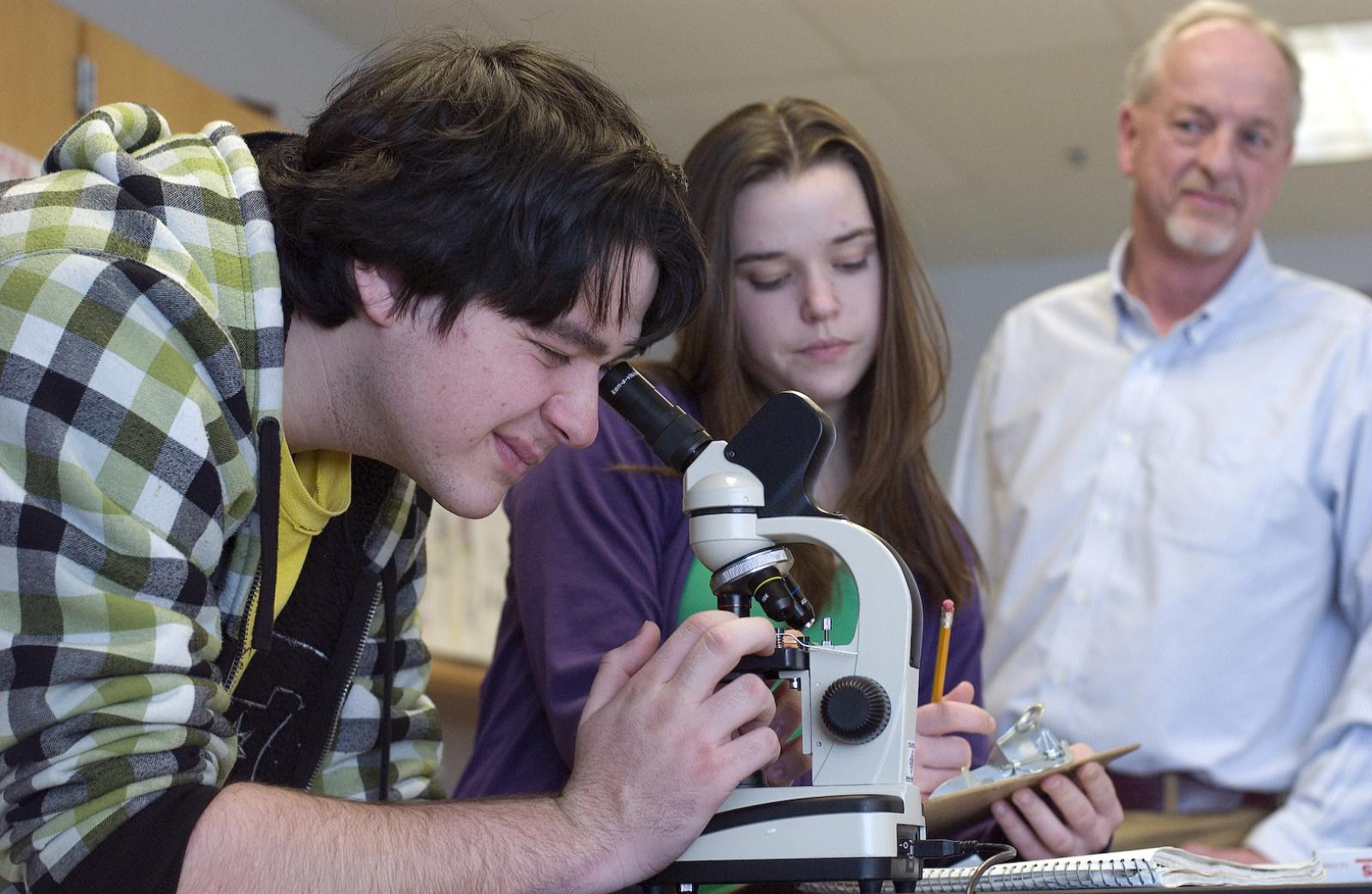In November they played leading roles in the regional high school drama The Miracle Worker.
Since then Katharine Clarke and fellow high school student Daniel Cuff have been working miracles of their own in the waters of Sengekontacket Pond.
The two seniors have been immersed in a marine biology water sampling project since last October. They’ve collected more than 30 water samples from beneath the Little Bridge, put the samples under a microscope and documented what they found.
“I don’t think anyone has ever done this before, to the degree that they’ve done it,” said teacher John Nelson.
To date the two students have identified 50 species of animals, all of them too small to see without optics.
It began when Katharine (her friends call her Katie) had a conversation with her school counselor Mary MacDonald early in the fall. “I was thinking about doing some independent science. I wanted more hands on, that is how I best understand and learn,” she said.
Daniel got wind of Katie’s project and asked if he could join her. “I’ve always been interested in marine biology. You learn a lot more when there are two people in a classroom,” he said.
In all weather the students went out and collected water samples from the rushing tidal water coming into Sengekontacket, using a six-inch wide funnel-shaped plankton net. They let the water run through the net for at least 15 minutes. Back in the classroom, they examined the contents of their watery catch beneath a microscope.
“At first we didn’t have a microscope camera, so we drew what we saw,” Katie said.
Mr. Nelson loves to watch to students at work. “It is gratifying to me to take science beyond the classroom,” he said. Just across the pond in Woods Hole, Katie and Daniel have received encouragement and help from a top scientist at the Marine Biological Laboratory (MBL). Images and identification data were turned over to senior scientist David Patterson, who is involved in identifying and documenting phytoplankton worldwide. MBL staff set up a working Web site for the two students. Their photographs are now readily available to other scientists.
Katie and Dan cannot say where this science will take them beyond high school.
For now, Mr. Nelson said the two will help him teach marine biology next semester. He said he wants the two students to show others the creative side of scientific discovery.




Comments (2)
Comments
Comment policy »